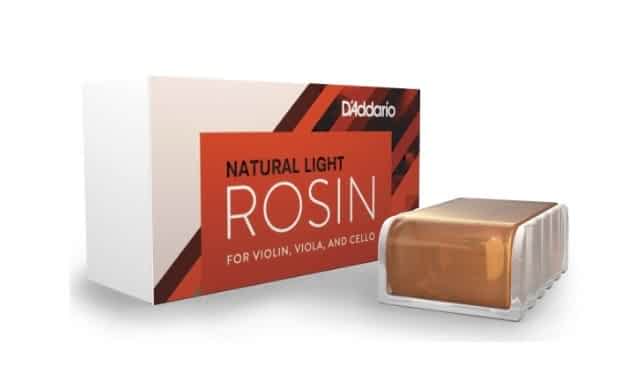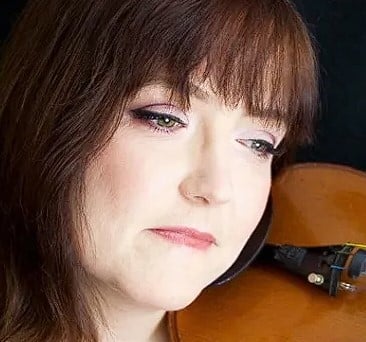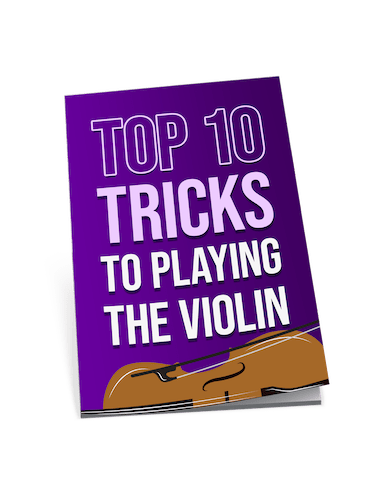Best
Overall Violin Rosin
-
Overall: Formulated with the original Kaplan recipe from Ladislav Kaplan
-
Best Feature: Designed for easy one-handed use
-
TedScore™: 10/10
Best
Handcrafted Rosin
-
Overall: Made to maximise the potential of violin players
-
Best Feature: Suitable for violins and violas
-
TedScore™: 9.2/10
Best
Rosin for Student Violinists
-
Overall: Keeps your string's tone clear and dynamic
-
Best Feature: Hand-poured and manufactured in the UK
-
TedScore™: 9/10
Getting the perfect sound from a violin isn’t just about skill; it’s also about choosing the best rosin for your bow. Like a secret ingredient in a prize-winning pie, the rosin you use on your bow can make a big difference in the richness and clarity of your sound.
Exploring the world of rosin is like digging into a treasure chest – each type offers something special to your playing. I’m here to help you navigate the options, from the gold-flecked Pirastro Goldflex to the reliable D’Addario’s Kaplan Premium Rosin.
Are you ready to discover which rosin will make your violin sound better than ever? Keep reading, and let’s find out that perfect pitch together!
Top 5 Best Violin Rosin On The Market
If you’re wondering what rosin do famous violinists use, you’re in for a treat!
Most rosin brands make different products for the violin, viola, cello and double bass. Different violin rosins are best suited for different players and climates, so it’s important to research and select the best rosin for your needs. Here are some of the best rosin brands in the market.
D’Addario Kaplan Premium Rosin
Get the best performance out of your instrument with D’Addario’s Kaplan Premium Rosin. It’s one of their most popular rosins and is designed to ensure a perfect balance between grip and smooth sound throughout, making it the best violin rosin for professional and even student musicians.

DESIGNED FOR: Violin players
FEATURES: Formulated with the original Kaplan recipe from Ladislav Kaplan
OTHER INFO: Available in light and dark varieties
D’Addario Kaplan Premium Rosin
When you check the price above, you’ll see there are loads of great places to buy this item. Our personal favorite is Gear4music.
It is the largest music retailer in the UK and fast becoming the most respected online music shop in the US too. Their customer service is excellent, they have competitive prices, really fast shipping, and usually have the longest guarantee.
Most professional musicians use Gear4music, so there is no reason why you shouldn’t too!
- Low dust
- Designed for easy one-handed use
- Rosin comes with a case
- None!
The professional musician who wrote this article combined many things,
from the product build, manufacturer’s reputation through to feedback
from other users, to create our famous TedScore™.
Pirastro Goldflex Violin or Viola Rosin
Add a little extra sparkle to your performance with Pirastro Goldflex Rosin. This rosin includes gold flecks, so you can ensure your bow has the perfect amount of grip and a warm and bright tone.

DESIGNED FOR: Violins and violas
FEATURES: Glides Gently Across the Bow
OTHER INFO: A Slightly Harder Gold Rosin
Pirastro Goldflex Violin or Viola Rosin
When you check the price above, you’ll see there are loads of great places to buy this item. Our personal favorite is Gear4music.
It is the largest music retailer in the UK and fast becoming the most respected online music shop in the US too. Their customer service is excellent, they have competitive prices, really fast shipping, and usually have the longest guarantee.
Most professional musicians use Gear4music, so there is no reason why you shouldn’t too!
- Mixed with Gold Dust
- Holds Shape and Does Not Crumble
- More expensive than other rosins on the market
The professional musician who wrote this article combined many things,
from the product build, manufacturer’s reputation through to feedback
from other users, to create our famous TedScore™.
Leatherwood Crisp Violin Rosin
Get the perfect balance between grip and sound with Leatherwood’s Crisp Violin Rosin. This rosin is easy to apply smoothly and evenly on the horsehair, giving you an excellent grip on your instrument.

DESIGNED FOR: Offers a decisive attack, firm traction, and crisp sautille
FEATURES: Ethically produced and long-lasting
OTHER INFO: Fits comfortably in the case pocket
Leatherwood Crisp Violin Rosin
When you check the price above, you’ll see there are loads of great places to buy this item. Our personal favorite is Gear4music.
It is the largest music retailer in the UK and fast becoming the most respected online music shop in the US too. Their customer service is excellent, they have competitive prices, really fast shipping, and usually have the longest guarantee.
Most professional musicians use Gear4music, so there is no reason why you shouldn’t too!
- Made by an Australian company dedicated only to making rosin
- Some players may find the decisive attack and firm traction too sharp for their music style
- The leather package may not provide enough protection against heat or air
The professional musician who wrote this article combined many things,
from the product build, manufacturer’s reputation through to feedback
from other users, to create our famous TedScore™.
Hidersine 3V Violin Clear Rosin
This Hidersine rosin is a quality rosin popular among both student and professional violinists. It’s made with quality materials, including spruce and maple, and provides excellent control over tone, articulation, and response.

DESIGNED FOR: Home and studio violinists
FEATURES: Keeps your string's tone clear and dynamic
OTHER INFO: Hand-poured and manufactured in the UK
Hidersine 3V Violin Clear Rosin, Medium
When you check the price above, you’ll see there are loads of great places to buy this item. Our personal favorite is Gear4music.
It is the largest music retailer in the UK and fast becoming the most respected online music shop in the US too. Their customer service is excellent, they have competitive prices, really fast shipping, and usually have the longest guarantee.
Most professional musicians use Gear4music, so there is no reason why you shouldn’t too!
- Dark amber enhances bass tones
- Protects and restores your violin strings' liveliness
- None!
The professional musician who wrote this article combined many things,
from the product build, manufacturer’s reputation through to feedback
from other users, to create our famous TedScore™.
Melos Violin Rosin
Melos Violin Rosin is a great rosin that’s easy to apply and takes up little space in the case. It’s made from Greek pine-tree colophony and has no fillers or extra chemicals, which makes it dust-free and really smooth.

DESIGNED FOR: Violins and violas
FEATURES: 100% handmade rosin
OTHER INFO: Made to maximise the potential of violin players
Melos Light Violin Rosin
When you check the price above, you’ll see there are loads of great places to buy this item. Our personal favorite is Gear4music.
It is the largest music retailer in the UK and fast becoming the most respected online music shop in the US too. Their customer service is excellent, they have competitive prices, really fast shipping, and usually have the longest guarantee.
Most professional musicians use Gear4music, so there is no reason why you shouldn’t too!
- Suitable for violins and violas
- Rosin's light version useful for summer
- None!
The professional musician who wrote this article combined many things,
from the product build, manufacturer’s reputation through to feedback
from other users, to create our famous TedScore™.
Choosing Violin Rosin
Type of Rosin: Amber Rosin, Light Rosin and Dark Rosin
Amber Rosin

Amber rosin is a type of rosin situated between light and dark rosins. It’s used by violinists and viola players to achieve a smoother sound. Amber rosin is generally softer and stickier than light rosin, increasing string friction. It often comes in either boxed or cake form, with the latter being slightly more expensive. Amber rosin is a popular choice for violinists due to its rich tone and high quality. It produces a full, clear, and high-quality sound that’s well-suited for playing high-pitched notes on the violin. This particular rosin also is preferred over other rosin types due to its consistency.
Light Rosin

Light rosin is a type of rosin made specifically for strings instruments like the violin and viola. It’s harder and less sticky than dark rosin, which makes it ideal for playing with subtlety. Lighter rosin is best suited for violins for its light tone and ability to provide adequate friction between the violin bows and strings. It gives you a lighter grip and is best suited for warm, humid weather. Rosins with a light, yellowish tone are typically French and North American pure rosins.
Dark Rosin

Dark violin rosin or winter rosin, is a softer and stickier type of rosin that works better for lower instruments such as cellos and upright basses because of their thicker-gauged strings, which provide more friction.
It generally has a “darker” tone and is preferred by most cellists and double bass players.
Shape of Rosin: Boxed vs Cake Rosin
Boxed
Boxed rosin is a type of rosin that comes in clear to amber colour particles. It’s priced lower than cake rosin, which benefits violin students using non-horsehair bows. This rosin is more durable and can be used on any stringed instruments, including viola and cello. Boxed rosin is best suited for use on violin strings in any season.
Cake
Violin, viola, and cello players often use cake-shaped rosins because they require a more consistent sound when playing their instruments. Cake rosin generally contains a smooth yet firm grip and is dust-free. It’s typically larger than other types of rosin and comes with a protective case to ensure that it doesn’t get dusty while stored.
Cake rosin can be easily applied to violin strings with just a little bit of friction or warmth. Whether you’re playing indoors or outdoors, cake rosin is an easy way to add depth and richness to your tone.
Rosin with Metal Flakes
Metal flakes can be added to your violin rosin for a smoother and fuller tone, improving your playing and sound quality.
Rosin with metal flakes is perfect for playing in higher violin positions and in fast passages, while rosin that does not include metal flakes is best for playing 1/2- and 3/4-size violins.
Silver rosin is best for high-pitched violin strings such as strings #1 and #3, and copper rosin is best for strings #2 and #4.
Rosin from living pine trees produces natural rosin with unique properties and is sustainable, making it an environmentally friendly choice for violinists.
Hypoallergenic Rosin
One of the most important factors to consider when purchasing rosin for your violin is the rosin’s sensitivity. A good violin rosin must be safe from most varnishes and can quickly cake and stick to the violin strings, causing scratches and damage to the violin.
Besides, violin rosin must be hypoallergenic and low-dust to ensure that it doesn’t affect the sound quality of the violin. It must be made from natural ingredients and free from synthetic chemicals and fillers for safety and quality.
Why Do Violinists Buy Violin Rosin?
Violin rosin is used as a binder and coating for violin strings to improve the bow’s grip and create a warm and rich sound from the strings of the violin. This substance is known for its adhesiveness and ability to enhance friction.
Applying rosin to violin strings also adds lightness and flexibility to the violin’s tone. It can also soften the sound of steel strings on electric violins, making them mellow and pleasant.
Violin Rosin Tips
Many types of rosin are available, and each provides a different sound and response. Let’s take a look at some of the essential things you need to know about violin rosins.
Tips for Finding Suitable Rosin
To help you get started, decide on the type of rosin you want – light, standard, or amber. Partly distilled rosin will be darker rosin colour and grittier on the string, while a completely distilled rosin will be almost clear. Also, think of rosin as a way of conditioning your sound and applying it evenly along your bow’s length. You may want to try different rosin brands to find the best one for you.
How to Apply Rosin

To apply rosin to your violin bow, start by placing a rosin cake at the base of the bow. Then, slowly and gently pass the bow across the cake’s surface from the bottom of the bow hairs, spending a few seconds in each area and applying rosin evenly throughout.
Afterwards, take the rosin in one hand and spread it over the hair back and forth from the frog to the top.
If you apply too much rosin, you’ll have a lot of dust everywhere. Ensure you cover the bow with an even coat to avoid this issue. Also, tighten the bow before playing.
Mixing Different Rosins on the Same Violin
Mixing different rosins on the same violin can have consequences that might diminish sound quality and create a mess on your bow, strings, and the instrument’s body. Generally speaking, the larger the instrument, the stickier and softer rosin should be.
No two rosin formulations are the same, so paying attention to this when mixing different rosins is important. If you decide to mix two different rosin brands, cleaning the bow hair before applying another brand of rosin is recommended.
How to Care for Your Rosin
Rosin should always be kept at room temperature, just like your violin. Many violinists like to keep their rosin in the same compartment as their violin.
Protecting Your Violin and Bow from Rosin Residue
To protect your violin and bow from rosin residue, wiping away any rosin dust or sweat after playing is important. You can do this with a clean, soft cloth, a damp cloth with mild wood-safe soap, or a regular washcloth with very warm water and hand soap. A dry, clean toothbrush is also effective for removing rosin from bow hair.
Additionally, make sure to loosen your bow and wipe the stick down with a soft, lint-free cloth after each use to remove all rosin buildup. Be sure to wipe the excess rosin off your bow with a soft cloth so it doesn’t meld with the varnish and make a mess; otherwise, you may notice “clouds” of rosin dust coming from the bow when you slide it across.
Best Rosin For Violin
Summary
While playing the violin is an art, rosin is also an important tool that helps violin players produce sound and maintain bow hair friction.
There are many rosins for violin players available in the market. However, we’ve listed some of the best violin rosins (saying the word rosin so many times sounds very strange…) to help you make an informed decision.
If you’ve used any of the best violin rosins mentioned above, tell us what you think!
FAQ's
Rosin is applied to the bow hair of a violin to create friction against the strings. This friction enables the bow to grip and vibrate the strings, producing sound with better clarity, resonance, and sustain.
Professional violinists typically use rosins that are specifically designed for their instrument. Popular brands include Leatherwood Bespoke Violin Rosin Crisp Recipe, Pirastro Goldflex rosin, and D’Addario’s Kaplan Premium rosin. Each rosin provides a clean, low-dust solution that enhances warmth and clarity, producing a superior sound.
Violin rosin is typically made from a blend of natural tree resins, such as pine or spruce sap, combined with other additives like wax or oils. These materials are processed and formed into a solid block that can be applied to the bow hair.
D’Addario offers rosins designed explicitly for beginner violinists. Their Hidersine Junior and Piranito Rosin are in plastic cases and suitable for all strings. Both the light and dark rosins are made with all-natural ingredients and offer premium performance at a great value.
One way to check if your rosin is still good is by scraping it with your thumbnail. If some rosin sticks to your thumbnail, then you have enough good rosin still on your bow. Another way is by running your bow along it. If a small path of dust is left on the rosin, then it’s still good.
Generally, light rosins are better for violins and are harder and less sticky than dark rosin. Darker rosins, on the other hand, are softer and stickier, providing more grip and producing a grittier sound. However, if you live in an area with hot and humid weather, light rosin is better suited as it won’t get as sticky.
Boxed rosin is rectangular and moulded to fit the box it comes in, while cake rosin is often easier to use and has less packaging. Boxed rosins are generally cheaper than rosin cakes, which come in clear and amber varieties.











Our teacher advised us to use the Kaplan rosin too. My son, who really is a complete beginner, finds it easy enough to use, and it’s not so messy (which I as a parent are happy about!).
That’s really helpful for my daughter who has just started to learn the violin. Thanks Anna for the article.